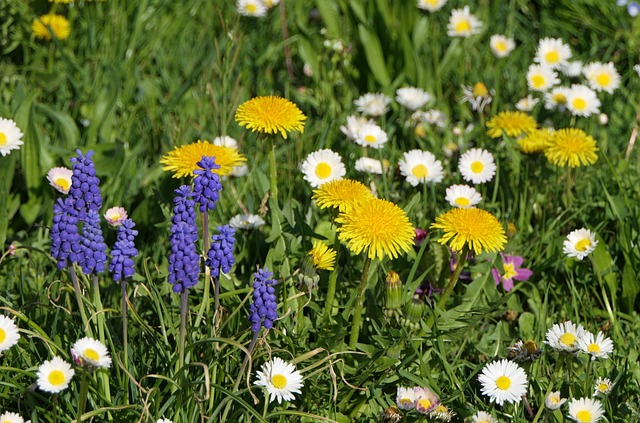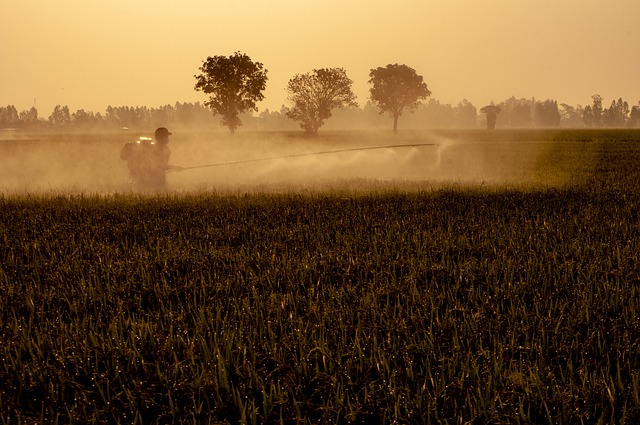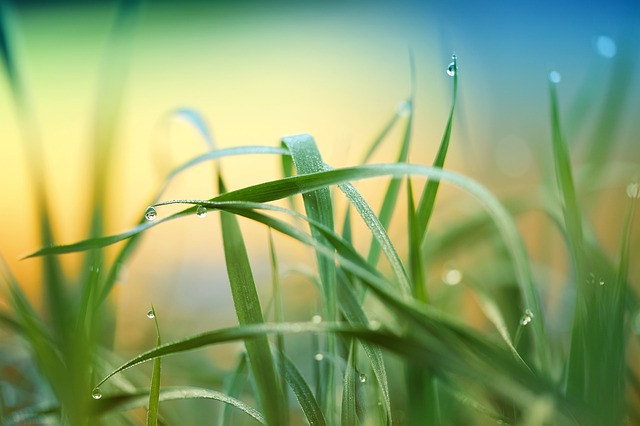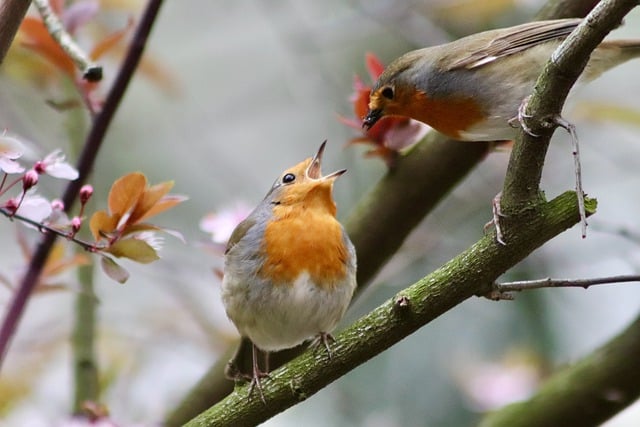Lawn Care and Landscaping are critical for creating a visually appealing and ecologically rich outdoor space. A successful approach involves understanding your property's soil, sun exposure, and topography to select appropriate grasses and plants that thrive locally. Regular lawn care practices like mowing, fertilization, and pest control maintain a lush lawn, while integrating diverse plant species and hardscapes like paths and water features adds visual interest and supports biodiversity. Advanced planning tools, such as 3D modeling software, can help visualize the project before execution. Staying current with landscaping trends ensures sustainability and aesthetic appeal. Consistent maintenance, soil enhancement, efficient irrigation, and monitoring for pests or diseases are essential for a resilient landscape that adapts to climate changes and minimizes environmental impact. This holistic approach to Lawn Care and Landscaping combines beauty with health, creating an outdoor sanctuary that is both serene and low-maintenance.
Embark on a journey into the art of transforming your outdoor spaces with our comprehensive guide on Lawn Care and Landscaping. This article meticulously explores the fundamentals of maintaining a lush, vibrant lawn, the core design principles that elevate your garden’s aesthetics, and the practical steps to implement your vision from planning to execution. Additionally, learn how to maintain and adapt your landscape for enduring beauty and health. Dive into the world of landscaping design to craft an environment that reflects both functionality and elegance.
- Understanding the Fundamentals of Lawn Care for a Thriving Landscape
- Design Principles: Crafting an Aesthetically Pleasing Outdoor Space
- Implementing Your Landscaping Vision: From Planning to Execution
- Maintaining and Adapting Your Landscape for Long-Term Vitality
Understanding the Fundamentals of Lawn Care for a Thriving Landscape

A well-maintained lawn is a cornerstone of an appealing landscape design, serving as a vibrant canvas that enhances the overall aesthetic of any property. To cultivate a thriving lawn, it’s imperative to delve into the fundamental practices of lawn care. The health of your grass begins with understanding soil composition and its impact on nutrient absorption; adjusting pH levels ensures optimal growth conditions. Consistent watering tailored to local climate and seasonal changes is crucial for maintaining moisture levels without promoting runoff or waste. Fertilization should be strategic, employing the right blend of nutrients at appropriate times to foster root development and foliage density.
Regular mowing at a proper height not only contributes to a neat appearance but also encourages grass health by preventing weed intrusion and protecting against fungal diseases. Aeration and thatching are seasonal practices that alleviate soil compaction and remove organic debris, respectively, allowing air, water, and nutrients to reach the roots more effectively. Integrating these lawn care strategies into your landscaping routine not only enhances the visual appeal but also creates a resilient landscape capable of withstanding environmental stressors and providing a serene, functional outdoor space for years to come.
Design Principles: Crafting an Aesthetically Pleasing Outdoor Space

Lawn Care and Landscaping play pivotal roles in creating an aesthetically pleasing outdoor space that harmonizes with the natural environment and enhances the beauty of a property. When designing such spaces, adherence to fundamental design principles is paramount. A well-thought-out layout should prioritize balance and symmetry, ensuring visual appeal from every angle. The use of contrasting textures, colors, and heights within plantings can create focal points and draw the eye across the landscape. Strategic placement of hardscapes like paths, retaining walls, and water features complements the soft elements of grass, shrubbery, and flowers to produce a cohesive and inviting environment.
Incorporating a diverse range of plants in a garden setting not only adds visual interest but also promotes biodiversity. The design should consider seasonal changes to maintain year-round beauty, with evergreens providing structure during dormant seasons. Additionally, lawn care practices such as proper mowing, fertilization, and pest management are crucial for maintaining a lush, green turf that serves as the foundation of the outdoor space. The interplay between meticulous lawn maintenance and creative landscaping elements like garden beds, stone accents, and water features can elevate the aesthetic quality of any property, creating an outdoor sanctuary that is both functional and beautiful.
Implementing Your Landscaping Vision: From Planning to Execution

Embarking on a landscaping project requires careful planning and execution to bring your vision to life. The foundation of any successful landscape design lies in thoughtful preparation, where lawn care and landscaping practices converge to create a thriving outdoor space. Begin by assessing your property’s unique characteristics, including soil type, sun exposure, and topography. This will inform the choice of plants, turf varieties, and hardscape elements that are best suited for your environment. A well-designed landscape plan will account for seasonal changes and long-term growth, ensuring that your outdoor area remains beautiful and low-maintenance over time.
Once the plan is set, the implementation phase commences with detailed lawn care and landscaping actions. This includes selecting the right grass species for your climate and soil conditions, which is crucial for a lush, green lawn. Plant selection should be based on regional nurseries’ recommendations to ensure hardiness and suitability. The layout of garden beds, walkways, and water features must be considered for both aesthetic appeal and functionality. Professional landscapers often use advanced tools and techniques, such as 3D modeling software, to visualize the project before breaking ground. This meticulous planning process helps avoid costly mistakes and ensures that every element of your landscape design is executed with precision. As you oversee the construction phase, staying informed about the latest lawn care and landscaping trends will further enhance the beauty and sustainability of your outdoor space. Regular maintenance and a keen eye for detail are key to transforming your vision into a tangible, serene, and inviting landscape.
Maintaining and Adapting Your Landscape for Long-Term Vitality

Engaging in regular lawn care and landscaping maintenance is a cornerstone for sustaining a vibrant outdoor space over time. The health of your landscape directly correlates with the practices implemented to maintain it. Consistent mowing, weed control, and fertilization are key components that contribute to a lush, green lawn. These activities not only enhance the aesthetic appeal but also promote soil health and support plant vigor. It’s important to select the appropriate type of grass and plants for your region’s climate and soil conditions to ensure they thrive throughout the seasons. Additionally, incorporating mulch and compost can improve soil quality and reduce the need for chemical interventions. By adapting irrigation systems to conserve water and monitoring plant health for early detection of diseases or pests, you can maintain an ecologically balanced landscape that remains resilient against environmental challenges.
Adapting your landscape to changing conditions is essential for long-term vitality. As the climate shifts and new gardening trends emerge, staying informed and responsive to these changes is crucial. This might involve updating plant selections to native species that require less maintenance and are better suited to local weather patterns. Regularly assessing and adjusting your landscaping design can also help in creating a more sustainable environment that is both beautiful and low-maintenance. Investing in seasonal upkeep and making strategic improvements, such as xeriscaping or installing permeable surfaces, can further enhance the longevity and sustainability of your landscape. By committing to ongoing lawn care and thoughtful adaptation, your outdoor space will not only endure but also evolve into a testament to harmonious living and environmental stewardship.
Landscaping design and implementation serve as a harmonious blend of art and science, ensuring that lawns and outdoor spaces thrive. By grasping the fundamentals of lawn care, homeowners can nurture a lush landscape that is both beautiful and sustainable. Applying design principles thoughtfully paves the way for an aesthetically pleasing environment that reflects personal style while integrating seamlessly with the natural surroundings. The transition from planning to execution requires careful consideration and attention to detail, which ultimately culminates in a vibrant outdoor space. To maintain this landscape’s vitality over time, continuous care and adaptability to environmental changes are crucial. Landscaping and lawn care, as integral components of this process, offer lasting enjoyment and enhanced property value. By following the guidelines outlined in this article, your landscape will not only flourish but also serve as a testament to your commitment to beauty and health within your outdoor living space.



